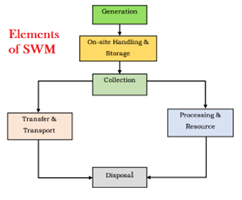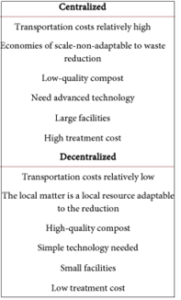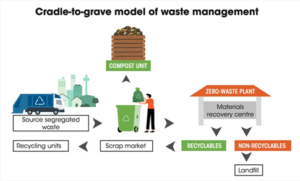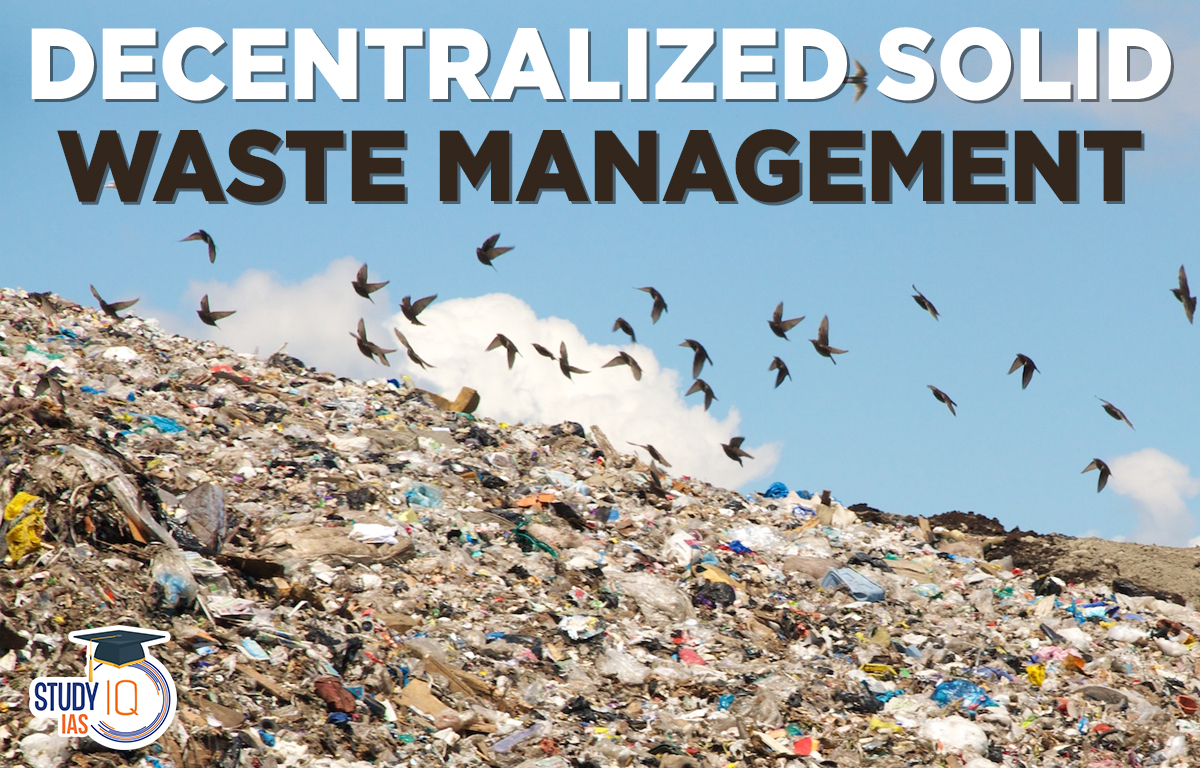Table of Contents
Context: The landfill fire at Brahmapuram, Kerala has once again turned the spotlight on the State’s ineffective solid-waste management practices, especially the centralized waste management model.
Brief Background: Brahmapuram Landfill Fire Incident
- On March 2, 25-ft-high ‘hills’ of garbage, extending over 40 acres at the Brahmapuram waste plant in Kochi caught fire, blanketing Kerala’s commercial capital with toxic smoke.
- The accumulated garbage, with legacy waste of 16 years, had huge amounts of plastic within it.
- The blaze spewed out dioxins, furans and many of the Persistent Organic Pollutants banned by the UN sponsored Stockholm Convention on POPs.
What are some of the reasons that led to the Brahmapuram Landfill Fire?
- Ineffective solid waste management practices: The solid waste management apparatus in Kochi is too tenuous for the amount of waste it produces. The waste-to-energy plant at Brahmapuram is dysfunctional, and waste was not removed efficiently from stockpiles.
- Lack of waste segregation at source: The widespread lack of waste segregation at source led to the accumulation of solid waste at the site, which was not removed quickly enough.
- Failure of contractors: Discrepancies between contractors’ actions to maintain the landfill and their obligations contributed to the accumulation of waste and the likelihood of a fire.
- Centralized waste management model: The centralized solid waste management model in Kerala, which relies heavily on large waste-to-energy plants and centralized landfills, contributed to the accumulation of waste at Brahmapuram landfill and the subsequent fire.

What is Solid Waste and Solid Waste Management (SWM)?
- Solid waste refers to garbage, construction debris, commercial refuse, sludge from water supply or waste treatment plants, or air pollution control facilities, and other discarded materials that are generated in a given area.
- SWM mainly refers to the complete process of collecting, treating, and disposing of solid waste generated in a particular area.
- The landscape of India’s solid waste management:
- Annual generation: India generates approximately 62 million tons of waste with an average annual growth rate of 4%.
- Recycling: Out of it, only 20% is recycled and the rest ends up in landfills and oceans affecting humans, and marine life, along with destroying the environment.
- Plastic waste: According to the Un-Plastic Collective (UPC) study, India produces 9.46 million tonnes of plastic waste per year, with 40% of it remain uncollected.
- E-waste: India also generates about two million tonnes (MT) of e-waste annually, which makes plastics and electronics two key components of waste generation.
What is Centralized Solid Waste Management System?
- Centralized solid waste management model refers to a system where waste generated in a city or town is transported to a central location for processing, treatment, and disposal.
- This model involves large-scale waste processing facilities, such as landfills or incinerators that are designed to handle the waste generated by the entire population of a city or region.
- Several concerns associated with the centralized solid waste management system:

What is Decentralized Solid Waste Management System?
- It refers to a system where waste generated in a local community is managed locally, rather than being transported to a central facility for processing and disposal.
- This system typically involves waste reduction, segregation, and recycling efforts at the community level, with the remaining waste being treated and disposed of locally.
- Various components of decentralized solid waste management system:
- Door-to-door collection and segregation: This involves collecting waste from households and businesses door-to-door and segregating it at the source, which can then be processed locally, such as through composting or recycling.
- Material recovery facilities (MRFs): MRFs are facilities that sort and process recyclable materials, such as plastics, metals, and paper, from waste collected locally.
- Biogas generation: This involves using anaerobic digestion to convert organic waste into biogas, which can be used as a fuel for cooking or lighting.
- Waste-to-energy (WTE) plants: Small-scale WTE plants can be set up in communities to convert waste into energy, which can be used to power homes and businesses.
- Local processing: Waste is processed locally, such as through composting, recycling, or waste-to-energy conversion. Processing facilities can be operated by the community or by small-scale private operators.

Case Study: Decentralized Solid Waste Management – Cradle-to-Grave Model
- In the city of Mysuru, Karnataka, changes have been brought about by adopting the decentralized management of biodegradable waste and the cradle-to-grave model.
About the Cradle-to-Grave Model
- It is a waste management approach where waste is managed from its origin to its final disposal.
- It emphasizes the responsibility of the waste generator and places control over the waste management process with local communities.
- The goal of this model is to reduce the burden on central waste management facilities and promote sustainable waste management practices.
- According to Mysuru City Corporation, due to this model, only 2–4% of inert waste, non-recyclables and residues from zero-waste plants go to landfills.



 DRDO and Air Force Successfully Test Ind...
DRDO and Air Force Successfully Test Ind...
 IB ACIO Recruitment 2025 Notification Ou...
IB ACIO Recruitment 2025 Notification Ou...





















